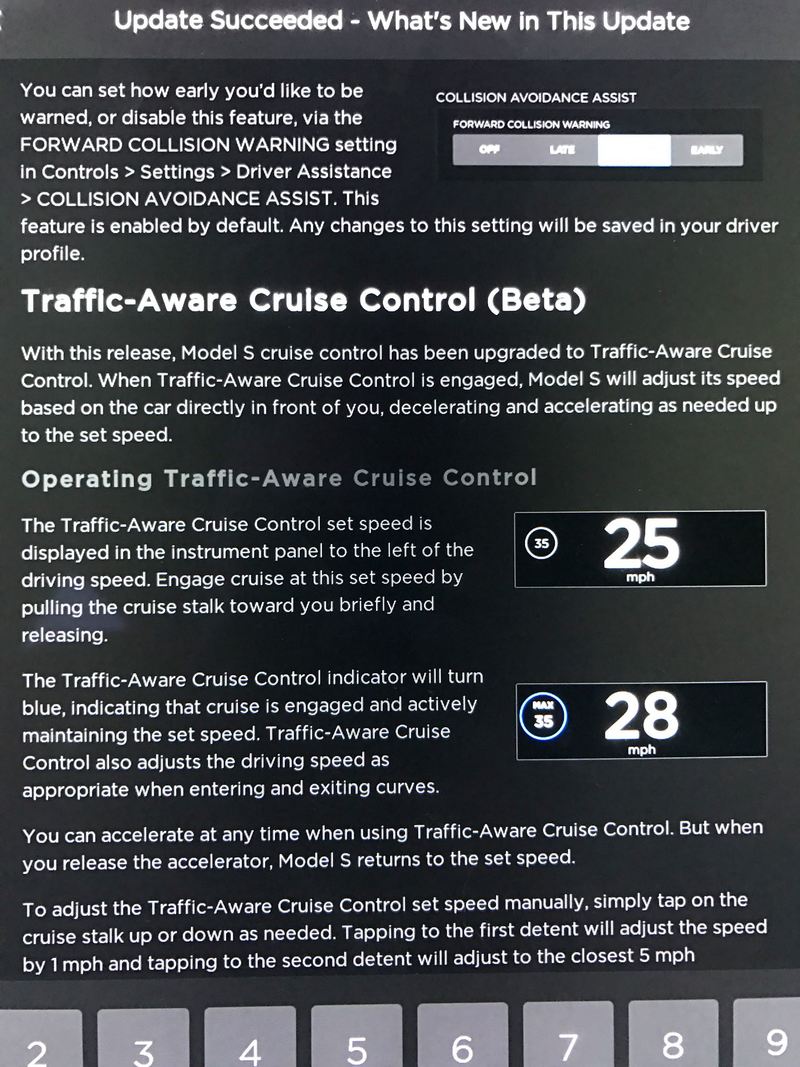Table Of Content

Even if it somehow launched a new AV with the correct technology to provide ARS (robotaxi) services, it would take years to implement this infrastructure. The autonomous ride-hailing market (robotaxi) has enormous potential. However, as I'll explain, I believe it's not feasible for Tesla, and investors should only be hoping for something substantial in that August 8th announcement.
Traffic-Aware Cruise Control
A taxi comes home to your depot every night and you have complete control over it. A taxi service also has a limited service area, and it’s much easier to build, test and certify safety in a service area than in a state or country. Tesla’s plan involves cars taking passengers in places that were not specifically tested and certified, depending on the general skill of the system. With a private car on a new road, there is an owner/driver in the car to help deal with anything unusual. You don’t want to send a random passenger into a situation or road that’s not seen full testing. It would require a 3X increase in net income, which is most likely unrealistic without a huge robotaxi business, especially while market share is declining.
Step 2: Examine The Autopilot
Even if Tesla developed the necessary autonomous driving technology to provide and establish a new business model, it would need extensive approval from local and state governments. Because the Tesla FSD robotaxi network aspirations are unconstrained, this would mean approvals in every municipality and state in the country, which is virtually impossible. Semi-autonomous vehicles are on a path to evolve to a point where they can operate more independently. They will be able to stop at traffic lights and signs and make left- and right-hand turns independently. Possibly, more than 90% of the driving could be done autonomously with substantially autonomous driving. However, the vehicle cannot drive autonomously everywhere, and a driver will still be required, even if they don't need to take control immediately.
Put your car in Drive
Their HD maps prevent them from driving outside an approved geo-fenced area, avoiding roads they cannot drive on. Initially, these areas and routes are limited, but still commercially viable. Fleets based in specific metropolitan areas and managed by fleet management staff will serve all these markets. It began when Reuters reported Friday the EV giant has canceled its long promised next-generation $25,000 vehicle, choosing to focus on developing its self-driving robotaxi platform. To turn on cruise control, simply take your lever and click it down while in Drive.

In Addition, Tesla Will Lose Market Share In Its Current EV Business
The first and most important step in turning on cruise control is to do this. A robotaxi service also needs all the tools that an Uber has, as well as a remote operations center to deal with unusual problems and rescue vehicles which need rescue. There’s no indication that Tesla has begun work on those, though it might acquire one. You need depots, and cleaning and charging and other infrastructure Tesla hasn’t built. None of this is rocket science—that’s the specialty of one of Musk’s other companies—but nor is it trivial. Tesla could, like Waymo, partner with Uber for some of this, though that’s not a desirable long term goal.
And if it doesn't invest in updates, customers will have little reason to buy newer Tesla vehicles. Unrestricted, Tesla expects its robotaxi vehicles to drive autonomously in every state and municipality without any approval. This is an SAE Level 2 classification, where Tesla's autopilot and the current FSD are classified. Tesla FSD has the potential to be more advanced but will still require a driver to be present, as will be explained.
Tesla Update Adds New Way to Activate Autopilot and Introduces Separate Rear Screen Audio - Not a Tesla App
Tesla Update Adds New Way to Activate Autopilot and Introduces Separate Rear Screen Audio.
Posted: Wed, 15 Nov 2023 08:00:00 GMT [source]
Reduce driver fatigue and increase fuel efficiency by using cruise control to maintain a consistent pace without constantly depressing the accelerator. Autopilot is a driver assistance system, so Tesla cars are not fully autonomous. Tesla explains that, while all of its new cars come with Autopilot installed, even the upgrade called Full Self-Driving Capability is not capable of driving the car by itself. The company says the systems are "intended for use with a fully attentive driver, who has their hands on the wheel and is prepared to take over at any moment."
Advanced Cruise Control Features for Tesla Model 3
It’s like being environmentally responsible without having to work harder. Long trips can be exhausting, particularly if you have to constantly change your speed. By relieving your feet and legs of that burden, cruise control lessens driving fatigue. Like taking a rest without actually stopping, that’s how it seems.
If a camera or sensor is obstructed, clean the cameras and sensors to remove any dirt, snow, ice, or mud that may be blocking them. If your driving speed exceeds the maximum cruising speed of 150 km/h, reduce your speed before engaging Traffic-Aware Cruise Control. When no obstacles are in front of the vehicle, Traffic-Aware Cruise Control will maintain a constant speed.
Related to this is the challenge of upgrading its previous models while simultaneously building new ones. Again, avoiding this was a luxury that Tesla enjoyed, but now it is getting precarious. For example, I would have bought a new, updated Model 3, but Tesla still needed to update it, so I bought something else with an updated design and system. This will increase Tesla's required investment to both update previous versions and develop new ones.
Let's say it still maintains a higher P/E multiple than others for whatever reason, maybe brand loyalty or fan investors. Perhaps it could be 30X, which would still be several times higher than GM or Ford. Tesla hasn't initiated any contact with regulatory agencies yet, or that would be disclosed publicly. All companies testing autonomous vehicles in California must file annual reports of the number of vehicles, miles driven, and disengagements. Tesla did not file the required reports for 2023, possibly because it didn't do autonomous driving there.
The ability to unwind while driving is one of the main benefits of using cruise control. You can allow the car to maintain your pace without continually depressing the gas pedal. Long trips become more comfortable because it’s like having a co-pilot. It’s unclear how good the idea of owners hiring out their cars to a network is. But I say original AirBNB because today, most AirBNBs are not private apartments being used while the owner is away, but dedicated units which do only AirBNB. The economics of peer-to-peer sharing of vehicles, while they seem interesting, may not pan out as hoped.
Once you’ve set your desired speed, you can engage the cruise control system by pressing the cruise control stalk down once. The cruise control system will be engaged when you see a green light on the cruise control stalk. While cruise control is a convenient feature, it is crucial to prioritize safety while using it. Tesla has implemented several safety features within their vehicles to ensure a safe driving experience. Autosteer utilizes cameras and sensors to keep the vehicle within its lane. When engaged, it helps reduce driver workload by assisting with steering and staying centered in the lane.



